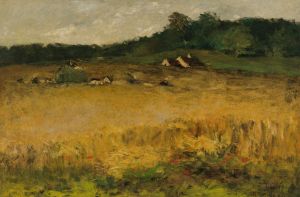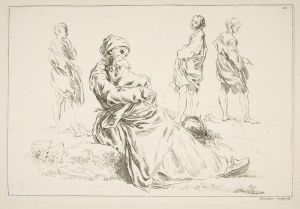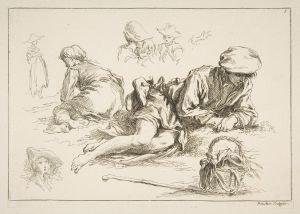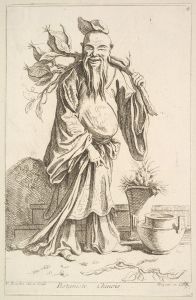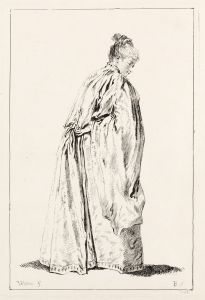
The Rising of the Sun
A hand-painted replica of François Boucher’s masterpiece The Rising of the Sun, meticulously crafted by professional artists to capture the true essence of the original. Each piece is created with museum-quality canvas and rare mineral pigments, carefully painted by experienced artists with delicate brushstrokes and rich, layered colors to perfectly recreate the texture of the original artwork. Unlike machine-printed reproductions, this hand-painted version brings the painting to life, infused with the artist’s emotions and skill in every stroke. Whether for personal collection or home decoration, it instantly elevates the artistic atmosphere of any space.
François Boucher's "The Rising of the Sun" is a notable example of 18th-century Rococo art, characterized by its ornate style and playful themes. Boucher, a prominent French painter, created this work in 1753 as part of a pair of paintings, with its counterpart being "The Setting of the Sun." These paintings were commissioned by Madame de Pompadour, the influential mistress of King Louis XV of France, who was a significant patron of the arts and a supporter of Boucher's work.
"The Rising of the Sun" is an allegorical painting that depicts the mythological scene of Apollo, the sun god, rising from the sea at dawn. Apollo is shown in a chariot drawn by four horses, symbolizing the sun's journey across the sky. The composition is dynamic and filled with movement, typical of Boucher's style, which often included swirling forms and a sense of fluidity. The painting is rich in color, with a palette that includes soft blues, pinks, and golds, creating a sense of warmth and light that is fitting for the subject matter.
Boucher's work is known for its decorative quality and its ability to capture the elegance and frivolity of the Rococo period. "The Rising of the Sun" exemplifies these characteristics, with its emphasis on beauty and grace rather than strict adherence to realism. The figures in the painting are idealized, with smooth, delicate features and graceful poses. The background is filled with clouds and cherubs, adding to the ethereal quality of the scene.
The painting was originally intended to be a tapestry design, which was a common practice at the time. Tapestries were highly valued in the 18th century, both for their artistic merit and their practical use in insulating and decorating the walls of grand homes. Boucher's designs were often translated into tapestries by the Gobelins Manufactory, a prestigious tapestry workshop in France.
François Boucher was a central figure in the Rococo movement, and his work was highly regarded during his lifetime. He held several important positions, including the director of the Royal Academy and the king's first painter. His influence extended beyond painting to include design work for porcelain, theater, and interior decoration.
"The Rising of the Sun" reflects the tastes and interests of the French aristocracy during the Rococo period, with its focus on mythology, beauty, and the pleasures of life. The painting remains an important example of Boucher's work and the Rococo style, celebrated for its technical skill and its ability to convey a sense of joy and lightness.
Today, "The Rising of the Sun" is housed in the Wallace Collection in London, where it continues to be admired for its artistic merit and historical significance. The painting is an enduring testament to Boucher's talent and the cultural milieu of 18th-century France.






